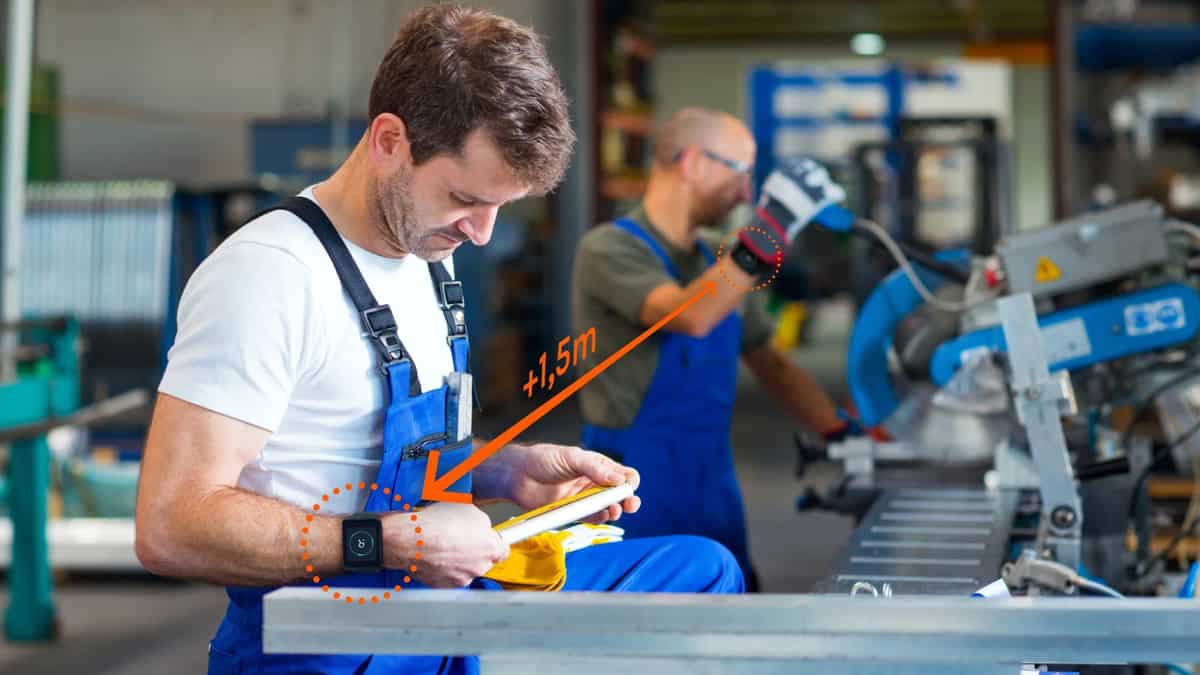
The Port of Antwerp will test Rombit digital bracelets to ensure social distancing and allow contact tracing to prevent the spread of COVID-19.
The Belgian port is the first to test the Romware Covid Radius.
The device is worn like a watch. It vibrates when wearers come within about 10 feet of each other. The vibration gets stronger and a warning light flashes the closer employees get. If a wearer becomes infected with the coronavirus, the device can identify which colleagues that person came in contact with so they can be alerted to get tested.
Port of Antwerp CEO Jacques Vandermeiren said in a statement that it will begin trial use of the bracelets soon.
“Innovation and digital transformation are crucial in times of crisis such as these. It is essential to keep the port operational and to ensure that our employees can work safely,” Vandermeiren said.
Rombit says in a how-it-works tutorial that an infected employee is asked to provide consent for his or her logged contact data to be retrieved for the past 14 days. Covid Radius only logs events of insufficient physical distancing with another wearable. The company-designated health and safety adviser receives a list of the wearable IDs that have had an event — come within about 5 feet — with the infected person. A video is available here.
Rombit says it hopes to have 25,000 devices available in the coming weeks and that it has been contacted by about 500 companies in nearly 100 countries.
Antwerp-based Rombit was founded in 2012 with the mission of making ports and industrial companies more efficient and safe. The Romware Covid Radius wristband features added functions to the Romware ONE safety bracelet.
Rombit CEO John Baekelmans said the company is “making huge efforts to get the modified bracelet onto the mass market in large quantities so that we can contribute toward getting the economy safely restarted.”
Europe’s second-largest seaport, the Port of Antwerp accounts, directly and indirectly, for about 143,000 jobs.
Port officials said the impact of the coronavirus was fairly limited in the first quarter of the year but is expected to be felt more in the second quarter with canceled sailings, shutdowns of vehicle manufacturing plants and changes in consumer behavior.
The port in fact handled 4% more freight in the first quarter of 2020 than in the same period in 2019. Container volume in particular made up for a decline in conventional breakbulk and vehicles.
“With growth of 9.5% in [twenty-foot equivalent units] and 9.4% in tonnage, the container trade remains by far the largest segment in the Port of Antwerp. There was a noticeable increase in the amount of pharmaceuticals and e-commerce goods, and there was higher demand for long-life foodstuffs. With the exception of a slight decline in goods from the Far East, down 2.2%, all trading regions experienced strong growth,” the port said in its Q1 earnings release.
Roll-on/roll-off tonnage was down 20.3% year-over-year in the first quarter and conventional breakbulk was down 27.8%.

